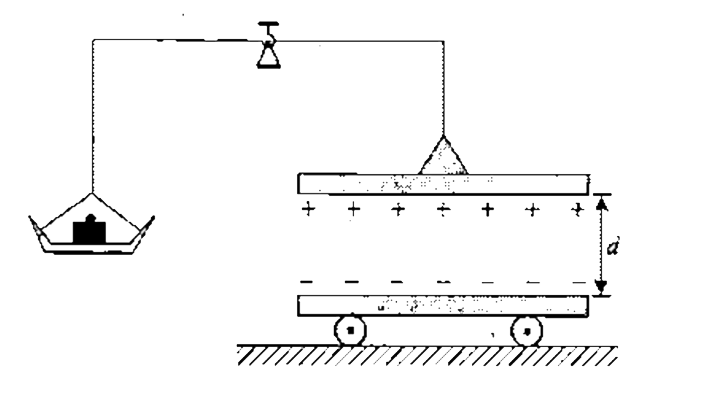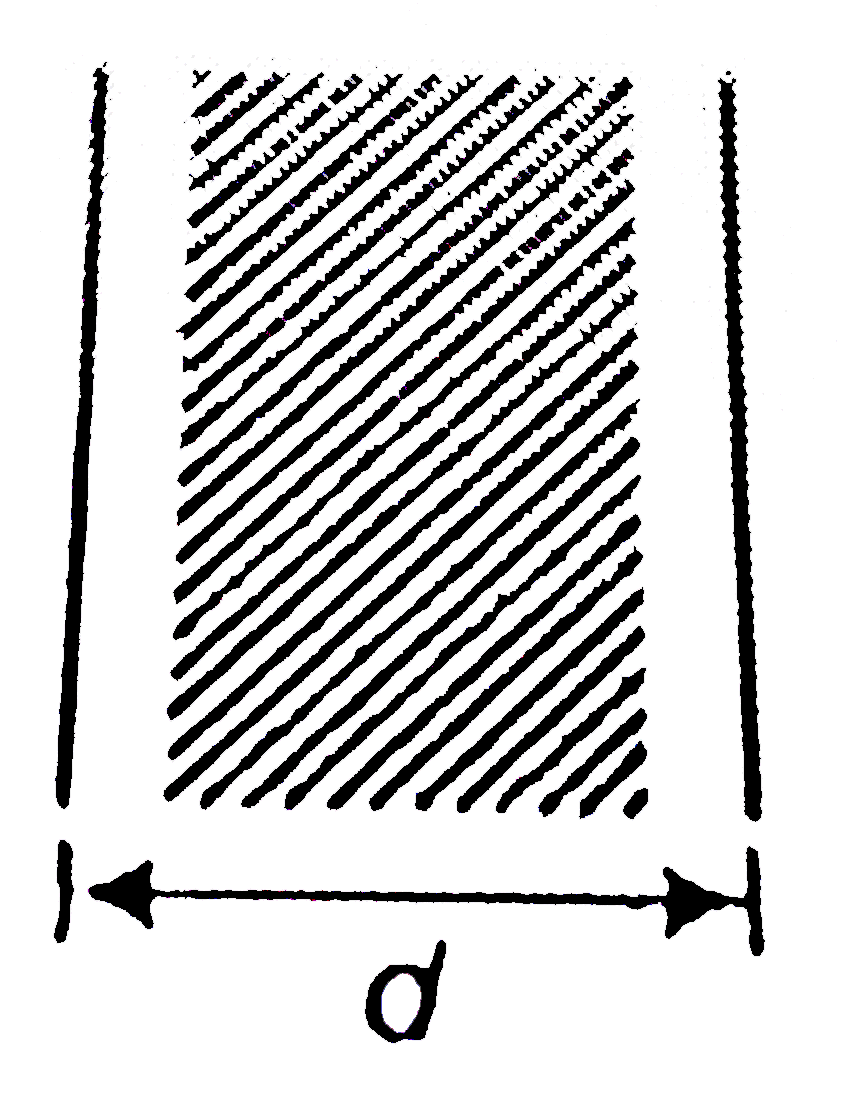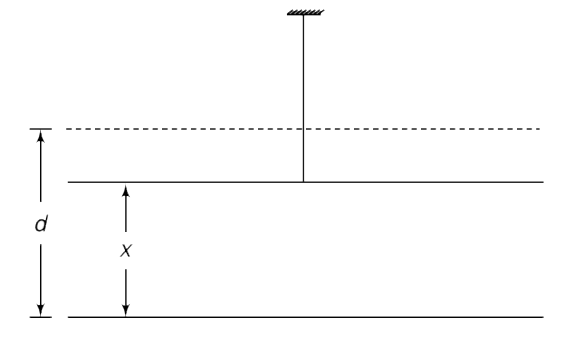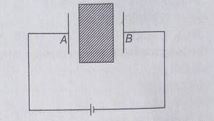The lower plate of a parallel plate capacitor is fixed on an insulating plane as shown in figure. The upper plate is suspended from one end of a balance. Initially the capacitor is uncharged and balance is in equilibrium state. A voltage V is applied between the plates, what additional weight should be placed to maintain the balance? Consider the separation between the plates to be d and the area of each plate is A.

Step by step video & image solution for The lower plate of a parallel plate capacitor is fixed on an insulating plane as shown in figure. The upper plate is suspended from one end of a balance. Initially the capacitor is uncharged and balance is in equilibrium state. A voltage V is applied between the plates, what additional weight should be placed to maintain the balance? Consider the separation between the plates to be d and the area of each plate is A. by Physics experts to help you in doubts & scoring excellent marks in Class 12 exams.
Topper's Solved these Questions
- BOOK - PHYSICS GALAXY - ASHISH ARORACHAPTER - CAPACITANCEEXERCISE - DISCUSSION QUESTIONS22videos
CAPACITANCE
- BOOK - PHYSICS GALAXY - ASHISH ARORACHAPTER - CAPACITANCEEXERCISE - CONCEPTUAL MCQA32videos
CAPACITANCE
- BOOK - PHYSICS GALAXY - ASHISH ARORACHAPTER - ATOMIC PHYSICSEXERCISE - Unsolved Numerical Problems39videos
ATOMIC PHYSICS
- BOOK - PHYSICS GALAXY - ASHISH ARORACHAPTER - CURRENT ELECTRICITYEXERCISE - All Questions389videos
CURRENT ELECTRICITY
Similar Questions
The lower plate of a parallel plate capacitor is supported on a rigid rod. The upper plate is suspended from one end of a balance. The two plates are joined together by a thin wire and subsequently disconnected. The balance is then counterpoised. Now a voltage V = 5000 volt is applied between the plates. The distance between the plates is d = 5 mm and the area of each plate is A =100cm2. Then find out the additional mass placed to maintain balance. [All the elements other than plates are massless and nonconducting]
 View Solution
View SolutionForce Between The Plates Of A Parallel Plate Capacitor
View Solution
Knowledge Check
- Question 1 - Select One
Force of attraction between the plates of a parallel plate capacitor is
Aq22ε0AKBq2ε0AKCq2ε0ADq22ε0A2K - Question 2 - Select One
As the distance between the plates of a parallel plate capacitor decreased
Achances of electrical break down will increases if potential difference between the plates is kept constant.Bchance of electrical break down will decreases if potential difference between the plates is kept constant.Cchance of electric break down will increases if charge on the plates is kept constantDchance of electrical break down will decrease if charge on the plate is kept constant. - Question 3 - Select One
A copper plate of thickness b is placed inside a parallel plate capacitor of plate distance d and area A as shown in figure. The capacitance of capacitor is
 AAε0dBAε0bCAε0d−bD∞
AAε0dBAε0bCAε0d−bD∞
Find out the capacitance of parallel plate capacitor of plate area A and plate separation d.
View SolutionLower plate of a parallel plate capacitor is fixed on a horizontal insulating surface. The upper plate is suspended above it using on elastic cord of force constant K. The upper plate has negligible mass and area of each plate is A. When there is no charge on the plates the equilibrium separation between them is d. When a potential difference = V is applied between the plates the equilibrium separation changes to x.
(a) Calculate V as a function of x.
(b) Find the value of x for which V is maximum. Calculate the maximum value of V(=Vmax)
(c) What will happen if V>Vmax ?
(d) Plot a rough graph showing variation of equilibrium separation (x) with V
 View Solution
View SolutionThe separation between the plates of a charged parallel-plate capacitor is increased. The force between the plates
View SolutionAn insulator plate is passed between the plates of a capacitor the current
 View Solution
View SolutionAn insulator plate is passed between the plates of a capacitor the current
 View Solution
View Solution

